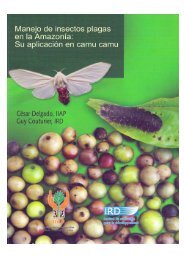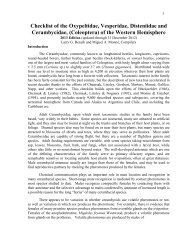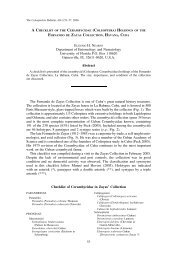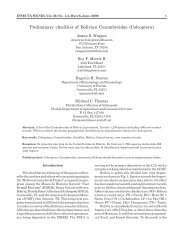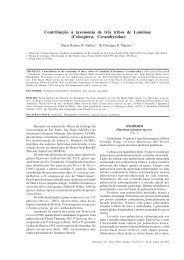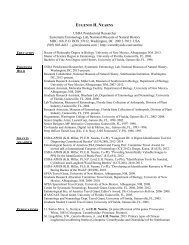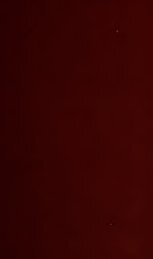You also want an ePaper? Increase the reach of your titles
YUMPU automatically turns print PDFs into web optimized ePapers that Google loves.
vi Introd1tction<br />
the tribe to be arranged into two groups, namely, those in which<br />
the pronotum is nal'l'ower at apex than at the base, as in Lochmaeoeles,<br />
HYPs'ioma, and the like, and those in which the opposite<br />
condition prevails, as in Oncide1"es, Taricanns, and allies. Nevertheless,<br />
certain genera" such as Cacostola, where either condition<br />
may occur or in which the base and apex are of equal width, connect<br />
the two divisions, thus making the use of subtribes unwarranted.<br />
In the first of these groups, several forms of pronotum occur ;<br />
first, conical, in which the sides are straight and regularly and<br />
distinctly narrowed to the apex (as in Hypsclo'11t1t8) ; second, subconical,<br />
in which the sides are distinctly arcuate, but strongly<br />
narrowed anteriorly (as in Marensis) ; third, those which have the<br />
sides tumid before and behind middle but still much narrower at<br />
apex than at base (as in Loch1naeoclcs) ; and, finally, cylindrical,<br />
the sides straight, nearly parallel, (lschioccntra). Intergrading<br />
forms can be found between most of these groups.<br />
'rhe antennae are variable in length and in thickness as well<br />
as in specialization of the scape, and the third and eleventh segments<br />
between sexes, species, and genera. Probably most important<br />
in distinguishing the genera is the third segment of the antonnae.<br />
In many genera, this segment is bisinuous, that is, curved<br />
npward near the base and in tIle opposite direction apically (Hyps'ioma)<br />
; in others it is simply straight (lschiocentra), or occasionally<br />
arcuate (Jatltcsia). In scattered cases, this may be swollen<br />
in various ways but usually only in the males; in several Oncideres,<br />
for example, the segment is tumid evenly throughout its<br />
length. In Clavidcs1nus, on the otber hand, it is strongly expanded<br />
towards its apex.<br />
Also of great significance in the distinction of genera are the<br />
elytra. Frequently, these organs are granulate or granulate-punctate<br />
over the basal portions, or the granules may be confined to the<br />
tumid areas (referred to as the basal gibbosities) or to the humeri.<br />
Or, even in genera closely related to granulate forms, the sculpturing<br />
will consist of simple punctures. The humeri occasionally<br />
are sh'ikingly modified, bearing crests (l'yphlocerus, Truncatoides,<br />
and Lesbates acro1nii), or are conical (Agar'itha), but are most<br />
variable in the degree of prominence. As a whole, the apices are<br />
simply rounded, either together or separately. Only in Ecthoea<br />
is an exception found; here there are two long rounded teeth on<br />
each apex.



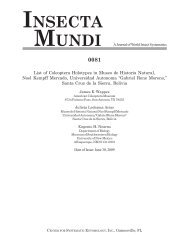
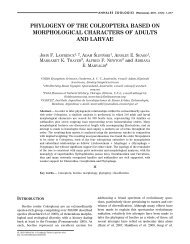


![Coleoptera. Vol. I. [Longicornia. Part I.]](https://img.yumpu.com/41202793/1/180x260/coleoptera-vol-i-longicornia-part-i.jpg?quality=85)
